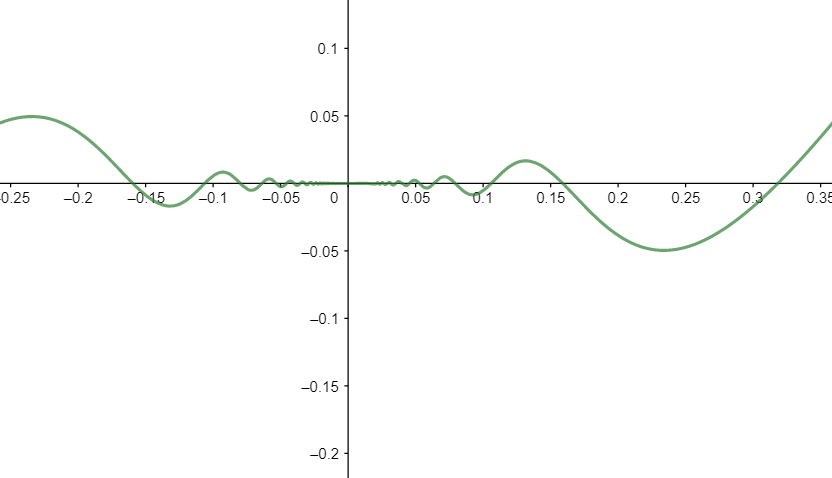Question
Question: Discuss the continuity of the function \(f\left( x \right)=\left\\{ \begin{matrix} {{x}^{2}}\si...
Discuss the continuity of the function f\left( x \right)=\left\\{ \begin{matrix} {{x}^{2}}\sin \left( \dfrac{1}{x} \right),x\ne 0 \\\ 0,\text{ }x=0 \\\ \end{matrix} \right. at x=0.
Solution
Hint: Use the fact that if a function f(x) is continuous at a point, then the left hand limit and the right hand limit at that point are equal and are equal to the value of the function at that point. Hence, we have f(x) is continuous at x= a if x→a−limf(x)=x→a+limf(x)=f(a). Hence find the left hand limit and the right hand limit at x= 0. Verify if the limits are equal or not. Check if the limits are equal and are they equal to the functional value and hence verify whether f(x) is continuous at x =0. Use the fact that x→0limxsin(x1)=0 and use x→a−limf(x)=h→0limf(a−h) and x→a+limf(x)=h→0limf(a+h) and hence find LHL and RHL.
Complete step-by-step answer:
We have f\left( x \right)=\left\\{ \begin{matrix}
{{x}^{2}}\sin \left( \dfrac{1}{x} \right),x\ne 0 \\\
0,\text{ }x=0 \\\
\end{matrix} \right.
Now, we have
LHL =x→0−limf(x)=h→0limf(0−h)
Hence, we have
LHL =h→0limf(−h)=h→0lim(−h)2sin(h−1)=h→0limh2sin(h−1)
We know that h→0limhsin(h1)=0
Hence, we have LHL =h→0lim(−h)h→0limhsin(h1)=0×0=0
Now, RHL =x→0+limf(x)=h→0limf(0+h)
Hence, we have
RHL =h→0limf(h)=h→0limh2sin(h1)
We know that h→0limhsin(h1)=0
Hence, we have RHL =h→0limh×h→0limhsin(h1)=0×0=0
Hence LHL = RHL = 0.
Also f(0) = 0.
Hence, we have
LHL = RHL = f(0).
Hence, the function is continuous at x=0.
Note: Graph of f(x):

As can be seen from the graph of f(x), f(x) is continuous at x=0.
[2] Alternative solution:
We know that if f(x) is continuous at x =a, then ∀ε>0 there exists δ>0 such that ∣f(x)−f(a)∣<ε, whenever ∣x−a∣<δ.
We have f\left( x \right)=\left\\{ \begin{matrix}
{{x}^{2}}\sin \left( \dfrac{1}{x} \right),x\ne 0 \\\
0,\text{ }x=0 \\\
\end{matrix} \right.
Claim: f(x) is continuous at x=0.
We have ∣f(x)−f(a)∣=x2sin(x1)−0=x2sin(x1)
Since sin(x1)≤1, we have x2sin(x1)≤x2≤∣x∣2.
Hence ∀ε>0∃δ=ε>0 such that whenever ∣x−0∣<δ⇒x2<ε⇒x2sin(x1)−0<ε.
Hence f(x) is continuous at x= 0.
